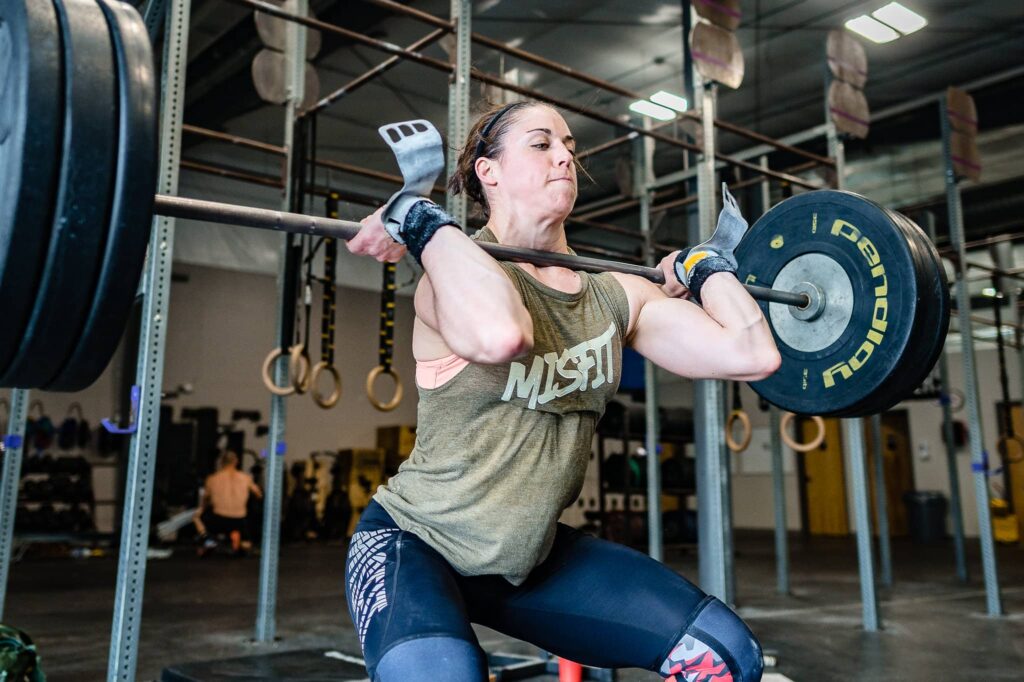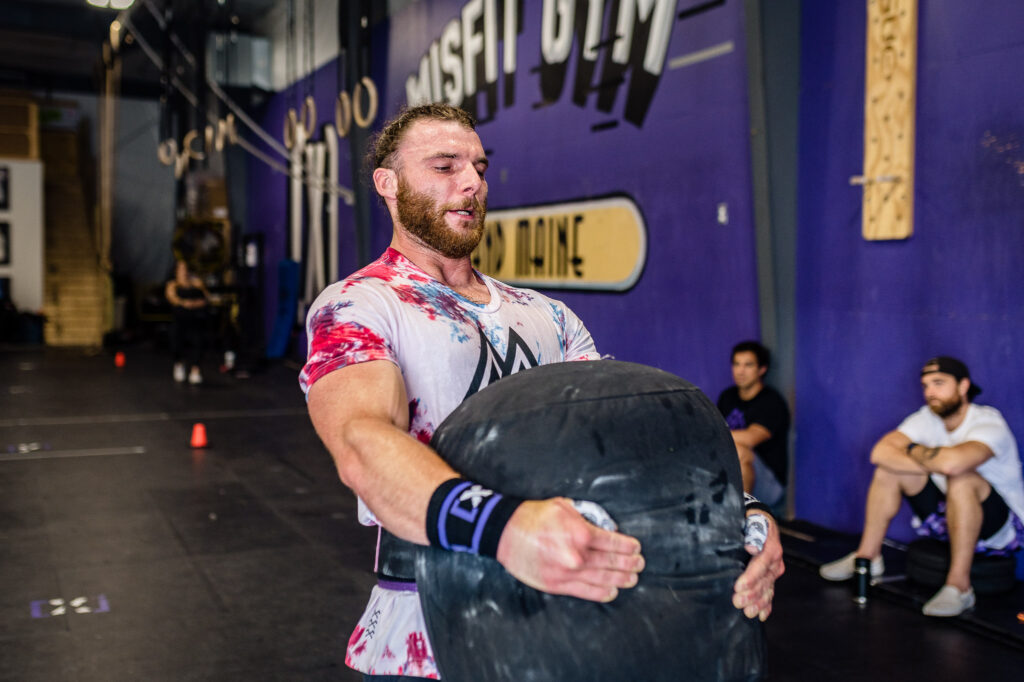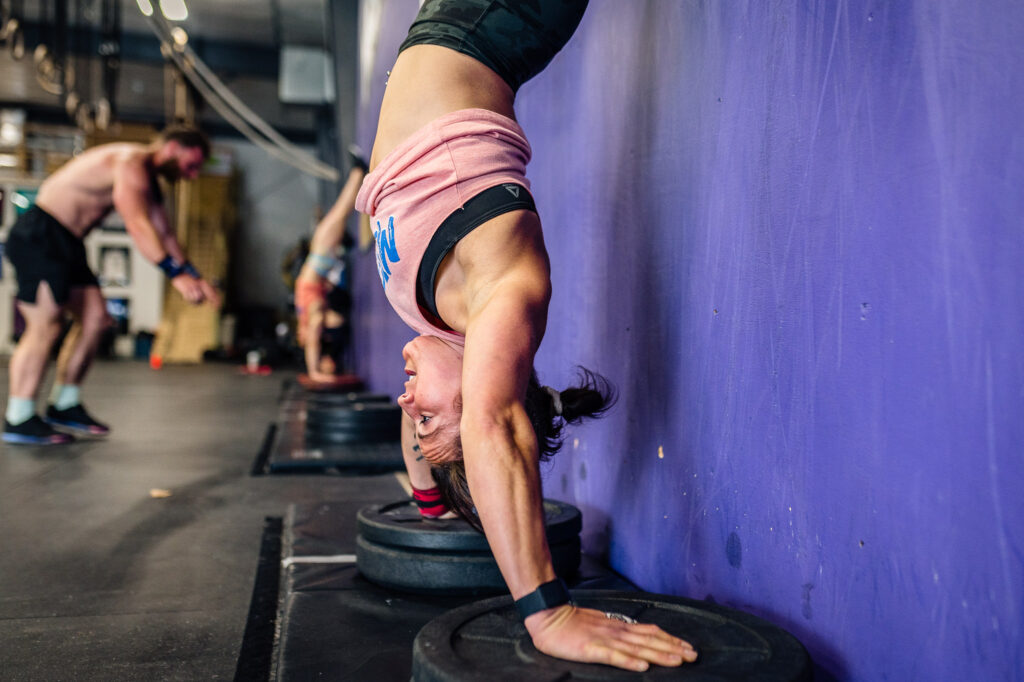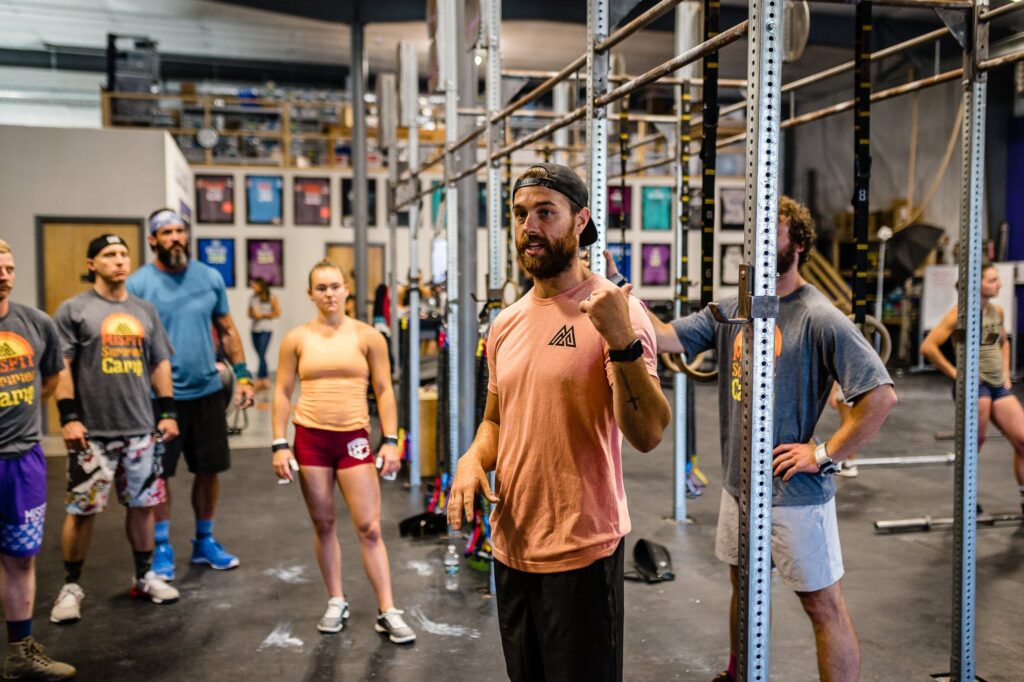Are you Training or Competing?

So you want to compete. You want to be at the top of your gym whiteboard, the Open leaderboard, and after Quarterfinals. You work your ass off all year and hit the MisfitAthletics.com workouts as hard as you can every day, but something’s not adding up.
One of the most important distinctions you need to make in your athlete journey is the difference between training and testing/competing. The sport of CrossFit can broadly be broken into these two macro-categories, which will ultimately dictate the rate of progress you as an athlete make. In general, the less experienced of an athlete you are, the more frequently your workouts will fall under the competing realm. In contrast, the more experienced and fitter you become, the more often you are training rather than testing or competing. Less experienced athletes can get fitter simply by virtue of being consistent because they have so many areas to improve that almost anything with work. However, most of you reading this have enough experience to understand that you need a more dialed in approach to improving, and that starts by understanding the differences between training and testing. Once you’ve extracted all you can from racing your buddies in affiliate classes, the real work begins, and a deeper understanding of what it takes to improve becomes equally as important as the time you spend in the gym. Training sessions shift from being concerned about a score or a time to being concerned with achieving the desired stimulus of the workout and the individual adjustments that need to be made to make it happen. I’m going to define these two categories for you and then try to give you a deeper understanding of how to manipulate your training so that you’re ready to run through a brick wall when it’s show time.

Testing and Competing
Definition: performing a workout, test, or event with the sole purpose of attaining the best score possible without regard for the appropriateness of the workout based on the individual athlete’s current fitness level or capacity. Examples of competing include online qualifier workouts where Rx and Scaled division are defined, an in-person competition, or opting to do the MFT version of a workout when the Hatchet version would be more appropriate to elicit the desired stimulus.
I’ve chosen to work backwards and start with testing, because in my experience, too many athletes are testing too frequently to see the progress they want to make. As the definition suggests, testing and competing should be reserved for expressing your fitness, not garnering more. If you are always competing – that is, predominantly performing workouts with the sole purpose of getting the best score possible or attempting the MFT version of workouts simply because “you can”, you are leaving a lot of potential progress on the table. We see this all the time with athletes just before the Open who are confident because they’ve beaten their online nemesis in a few training pieces throughout an off-season, but when it’s showtime they find themselves well below where they may have expected. The difference is that in non-competition settings, the best athletes are looking at the written training pieces and are saying to themselves, “what do I need to attack in order to improve my personal fitness” rather than “how can I game this workout to get the best score possible?”. The latter creates a scenario where athletes shy away from the part of the workout they need to attack hardest and should be reserved for when the result matters – the Open, Quarterfinals, or an in-person competition. The rest of the time (off-season, not competition, and outside of test and retest weeks), your athlete brain and ego need to be paying close attention to pacing instructions, the desired stimulus, and what YOU need to do in every training piece to make yourself better. If you’re always competing, you’re running someone else’s race and won’t have another gear to kick into when it matters. If you find yourself perpetually chasing your training partners or arbitrary times on random scores you see online or are doing the MFT workout as written “because you can,” your ego is getting the best of you. There is a time and a place to test yourself, but it’s far less frequent than you think.
Training
Definition: performing workouts and training pieces with the goal of achieving the desired stimulus and improving individual weaknesses. Athletes read and understand pacing instructions, stimulus, and proactively modify the workout to allow the stimulus to be met.
For athletes who have been training long enough to be past the point of beginner gains and who are interested in reaching their physical potential, 90% or more of your time should be spent training. Once the consistent physical improvements start to slow down after years of training, your Athlete IQ and maturity become crucial. The fittest athletes are also the smartest ones because they understand that their score on the AMRAP from last Tuesday is irrelevant compared to what they learned from it. All too often, we observe athletes who see the MFT version of a workout as a “for completion” challenge. Sure, you finished the workout, but if you were 5 minutes behind Caroline in a 10 minute workout, did you achieve the goal of the training piece or make a personal improvement?
Whether you like it or not, the sport of CrossFit is one of conditioning, and improvements in conditioning are made when you’re able to work at the highest output you can for the intended duration of the training piece. Don’t get me wrong, you need to be strong and skilled as well, but If you’re constantly running into roadblocks because your ego is too big to pull some weight off a barbell or take a few reps off the prescribed number of muscle-ups, you’re leaving a ton of fitness on the table. Strength sessions get you stronger, skill sessions allow you to perfect your mechanics and consistency, but conditioning pieces are your bread and butter when it comes to moving your name up the leaderboard.

How to Execute
The flow chart is simple: are you about to execute a test where your placement on a leaderboard matters? If the answer is no, you are training, period. If you ask yourself that question before every training piece you do every day, it should become obvious that the vast majority of the time you are training. Now that you know that you’re training and not testing, you need to look at the desired stimulus or “feel” of the workout, the duration we expect, and the general pacing guidance we provide. All three of these bits of information live conveniently below every conditioning, interval, and Bitch Work piece we provide, and their associated definitions can be found HERE.
So you’ve got the workout, and you’ve got the why; now you and your ego need to have a conversation about what needs to change to the written workout to meet the why (the feel, duration, and pacing). If the desired feel of the workout is “conditioning” (where we don’t want any single component of the workout to slow you down) and you know the weight on the barbell is going to force you to put it down multiple times, you need to pull some weight off. If the gymnastics volume isn’t something you could do nearly forever, knock a few reps off to allow you to keep moving. Don’t get me wrong, there is a time and a place for the barbell to be heavy and the gymnastics to be daunting – we need the occasional “wow factor” or seemingly insurmountable task in training to remind us of how far we’ve come. However, if you find yourself in that situation more often than not, it’s more likely that your conditioning is the limiting factor and you need to set yourself up with weights and rep schemes you can attack rather than survive. We’ve said it before, and I’ll say it again, unless you are a Semifinal athlete (or within a few spots) or higher, you will almost always be better served by hammering the Hatchet program into oblivion versus slogging through the MFT training pieces. As a final bit of inspiration, Kenzie Riley, one of our perennial Games athletes, is known for regularly modifying MFT workouts on her own accord to achieve the desired stimulus. Get the picture?
Final Thoughts
What was your time on the deficit push-up/push press/lateral burpee box jump over interval from May 3rd, 2021? I don’t remember either. But I do remember that I did the affiliate version of that workout because it allowed me to achieve the muscular overload stimulus while still being able to keep moving at a pace that improved my fitness for that given day. It was hard. My upper body was toast, but I went fast. Because I went fast and achieved the stimulus, I got fitter. If I had done the MFT version of that workout I would have been buried by the 60lb DBs that were prescribed, and it would have turned into more of a bodybuilding session than a conditioning piece. Odds are, if you’ve made it this far in this article, you’re someone who’s interested in getting better. To get better, you have to run your own race and attack the training pieces as intended and with your fitness level in mind.
Remember: if you’re always competing, you’re never competing. If you’re always competing, you never have a higher gear to kick into because you’ve only been operating on a level that tries to game your training, so you have nothing else in your toolkit when it matters. The smartest athletes take the information they’ve gleaned from the other 95% of the time they’ve spent in the gym so that when it’s time to see what they’re made of, they’ve done the work that allows their training to be put on display.


